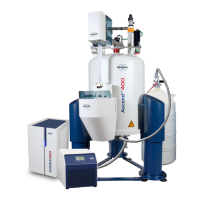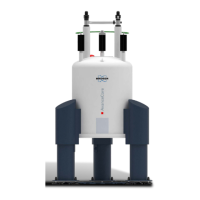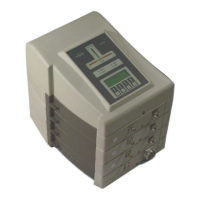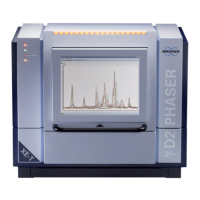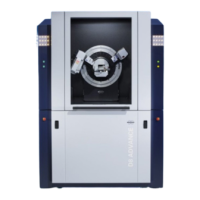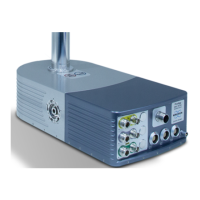Magnet Safety
28 / 48 H171764_6_001
4.5.1 The Helium Vessel
The superconducting NMR magnets contain an inner vessel with liquid helium.
• The helium vessel should be checked weekly for boil-off and helium level.
• Use a helium flow meter or a helium gas counter!
• A one way valve is supplied to be mounted on the helium manifold to ensure that the
helium neck tubes cannot be locked by the ingress of air or moisture. This valve should be
mounted at all times except during a helium transfer.
4.5.2 Helium Refill Instructions
Please follow the following instructions concerning the refill of NMR magnets with liquid
helium:
• Refill the helium vessel within the specified hold time period and certainly before the level
falls below the allowed minimum level listed in the magnet manual.
• Important Note: Transfer of liquid helium can be done easily and safely, provided:
– The handling of the helium transfer line is correct.
– The helium transfer line is not damaged.
– The transfer pressure does not exceed 2 psi (0.14 bar).
• Never insert a warm helium transfer line into the cryostat, since the warm helium gas
could lead to a quench of the magnet!
• Always allow the helium transfer line to cool down to helium temperature before inserting it
into the right helium neck tube. You should see liquid helium leaving of the short end
transfer lines for a few moments, before inserting it into the right helium neck tube.
4.5.3 Rapid Helium Transfer
Do not remove the nitrogen security flow system during any transfer liquid helium!
During a rapid transfer of liquid helium, super cooling of the liquid nitrogen occurs. This can
lead to the following:
• Decrease of static boil off to zero, and producing a negative pressure in the nitrogen
vessel.
• Transfer of air or moisture that can be sucked into the necks of the vessel, and which
would solidify and create ice blockages.
4.6 Ventilation
General safety rules concerning ventilation include, but are not limited to:
• Cryogenic liquids, even when kept in insulated storage dewar, remain at a constant
temperature by their respective boiling points and will gradually evaporate. These dewar
must always be allowed to vent or dangerous pressure buildup will occur.
• Cryogenic liquids must be handled and stored in well ventilated areas.
• The very large increase in volume accompanying the vaporization of the liquid into gas
and the subsequent process of warming up is approximately 740:1 for helium and 680:1
for nitrogen.
